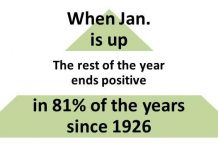In a popular children’s story, the young hero pins all his hopes on finding one of a handful of “golden tickets” hidden among millions of candy bars. It seems many people approach investing the same way.
The notion that the path to long-term wealth lies in locating secret and previously undiscovered treasures in the global marketplace of securities is one regularly featured in media and market commentary.
One magazine, for instance, runs a feature called “Fund Managers’ Secret Stocks,” referring to supposedly “bargain” stocks the pros keep hidden. (How the stocks can be secret when splashed on magazine stands nationally is not explained.)
Likewise, a popular business broadcaster regularly tells its viewers about the “under-the-radar” stocks that Wall Street analysts don’t want them to know about.
This stuff sells because it plays to a misconception about how markets work: that they are like beaches after a hot day, full of buried treasures. All you need, in this view of investing, is a virtual metal detector to find the money that people left behind.
You could get lucky this way, of course. But basing a long-term investment strategy on stumbling across the equivalent of a mislaid trinket in the sand or a golden ticket in a chocolate wrapper is not likely to be sustainable.
It’s a haphazard approach, reliant on chance and requiring a lot of work that is unlikely to be rewarded. Worse, it means taking unnecessary risks by tying one’s fortunes to a handful of securities or to one or two sectors.
Taking big bets on a single sector or commodity is a bit like buying a chocolate bar in the hope of finding a golden ticket. There’s an element of pot luck, and you’re exposing yourself to idiosyncratic risk related to that sector or industry.
On the subject of hidden treasures, gold itself can have a special allure for investors, particularly in uncertain times. Indeed, the yellow metal has had a couple of spectacular runs, in the 1970s and in the 2000s. But there have been long lean times and significant volatility in between, which makes gold a highly speculative bet.
In early 2013, the Daily Mail in the UK carried the headline, “Gold Set to Shine Even More Brightly in 2013.” The rationale was that with investors scouring the world for “safe havens,” gold could reach as high as $2,500 an ounce by year end.1
As it turned out, gold suffered its biggest annual loss in three decades last year, with its spot price falling 28% in US dollar terms. From an all-time high of $1,920 in September 2011, gold fell to just over $1,200 by the end of 2013.
Now, adopting some exposure to gold may well suit some investors as part of a broadly diversified portfolio, but taking speculative bets on a single commodity, sector, or stock is more akin to blind hope than to anything else.
The popularity of media stories about hidden bargains and undiscovered stocks is understandable. Like townsfolk in a bar overhearing the boasting of gold diggers down from the hills, we desperately want to believe in El Dorado. But this sort of speculation is really no different than gambling.
In contrast, sound investment starts with identifying the risks worth taking and minimizing the risks that don’t come with an expected reward, like taking a big bet on gold. You can help reduce risk and increase flexibility by diversifying.
It’s true that you can get lucky the other way, like the boy in the chocolate factory story. But the chances are against you.
And keep this in mind: The best investment may not be the golden ticket anyway.
1. “Gold Set to Shine Even More Brightly in 2013,” Daily Mail, January 2, 2013.
Article by Jim Parker, Dimensional Fund Advisors – Outside the Flags, February 4, 2014
Dimensional Fund Advisors LP is an investment advisor registered with the Securities and Exchange Commission.
All expressions of opinion are subject to change without notice in reaction to shifting market conditions. This information is for educational purposes only and should not be considered investment advice or an offer of any security for sale. Diversification does not eliminate the risk of market loss.
This blog entry is distributed for educational purposes and should not be considered investment, financial, or tax advice. Investment decisions should be based on your personal financial situation. Statements of future expectations, estimates or projections, and other forward-looking statements are based on available information believed to be reliable, but the accuracy of such information cannot be guaranteed. These statements are based on assumptions that may involve known and unknown risks and uncertainties. Past performance is not indicative of future results and no representation is made that any stated results will be replicated. Indexes are not available for direct investment. Their performance does not reflect the expenses associated with the management of an actual portfolio.
Links to third-party websites are provided as a convenience and do not imply an affiliation, endorsement, approval, verification or monitoring by Granite Hill Capital Management, LLC of any information contained therein. The terms, conditions and privacy policy of linked third-party sites may differ from those of this website.




